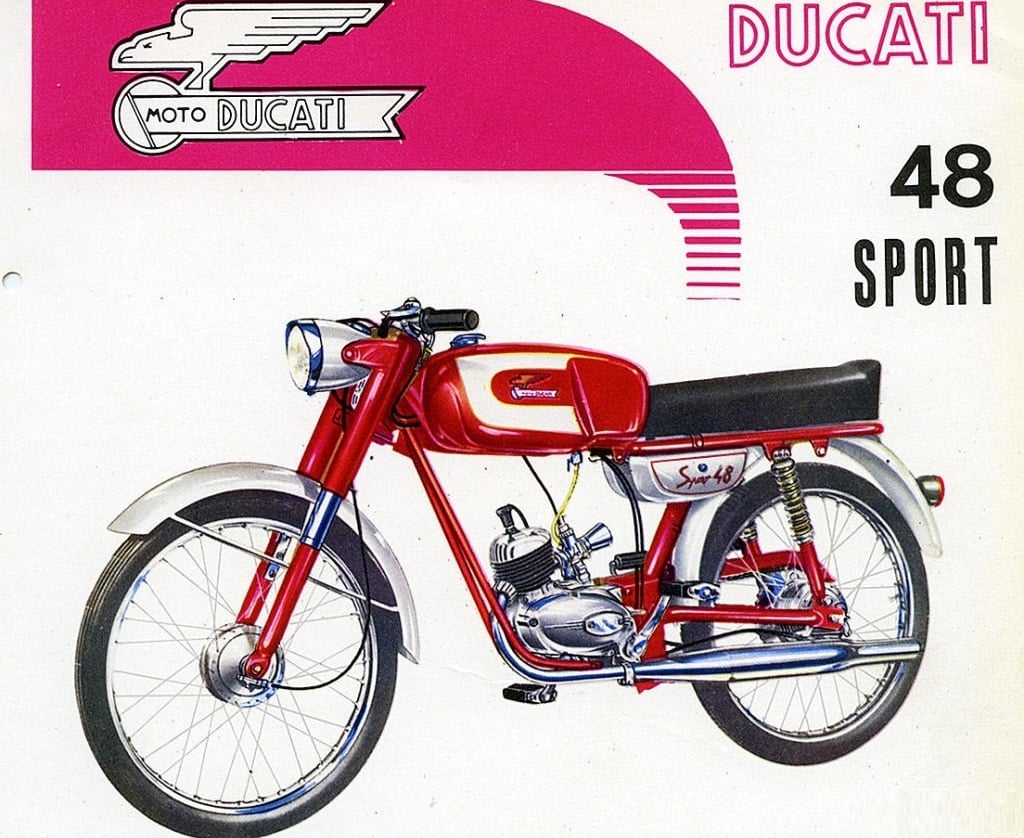Exploring the Ducati 48 Sport: A Nostalgic Journey into the 1960s Youth Motorcycle Scene
The article explores the Ducati 48 Sport, a motorcycle from the 1960s that aimed to redefine the image of motorcyclists. It delves into the design, performance, and marketing strategies of the 48 Sport, highlighting its user-friendly design, balance between efficiency and performance, and the unique approach Ducati took to appeal to a more sophisticated audience. The article also mentions noteworthy features such as drum brakes, under-seat storage, and a tool kit. Overall, the Ducati 48 Sport represents a transition and evolution in the motorcycle industry during the 1960s.
DUCATIITALY MOTORCYCLES 1960'STWO STROKE
11/26/20232 min read


Exploring the Ducati 48 Sport: A Nostalgic Journey into the 1960s Motorcycle Scene
Introduction: The Ducati 48 Sport, a charming relic from the 1960s, holds a special place in the world of motorcycles. Targeted specifically at students and young adults, this series aimed to redefine the perception of motorcyclists in the United States during a time when the image was often associated with a rough and rebellious nature. This article delves into the key features and historical context surrounding the Ducati 48 Sport, shedding light on its design, performance, and the marketing strategies that sought to appeal to a more refined audience.
Design and Engineering: At the heart of the Ducati 48 Sport lies a modest yet powerful 48cc, two-stroke, single-cylinder air-cooled engine. The inclusion of a three-speed manual transmission, seamlessly integrated into the throttle grip, exemplifies Ducati's commitment to user-friendly design. This innovative approach not only set the 48 Sport apart from its contemporaries but also made it an ideal choice for riders navigating the bustling streets of the 1960s.
Performance: With a reported top speed of 50 mph, the Ducati 48 Sport showcased a balance between efficiency and performance. The choice of a two-stroke engine and a lightweight design contributed to the bike's agility, making it an attractive option for urban commuting and recreational riding. The three-speed manual transmission allowed riders to experience a sense of control, further enhancing the overall riding experience.
Marketing Strategies: In an era when motorcyclists often carried a rebellious stereotype, Ducati adopted a unique approach to market the 48 Sport. By featuring smiling, college-educated individuals in their advertisements, Ducati aimed to appeal to a more sophisticated audience. This strategic move not only challenged prevailing stereotypes but also positioned the 48 Sport as a symbol of youthful freedom and style.
Noteworthy Features: The Ducati 48 Sport was equipped with drum brakes both at the front and rear, ensuring reliable stopping power. The inclusion of rear under-seat storage added practicality to the bike, catering to the needs of students and young adults on the go. Additionally, a tool kit was provided, reflecting Ducati's commitment to empowering riders with self-maintenance capabilities.
Conclusion: The Ducati 48 Sport stands as a testament to Ducati's ingenuity in addressing the changing dynamics of the motorcycle market in the 1960s. From its innovative design and performance capabilities to its strategic marketing approach, the 48 Sport encapsulates an era of transition and evolution in the motorcycle industry. As we reflect on this charming two-wheeler, it becomes evident that the Ducati 48 Sport not only provided a mode of transportation but also became a symbol of a generation seeking adventure with a touch of sophistication.
